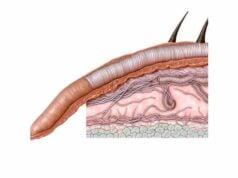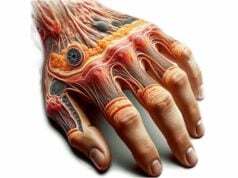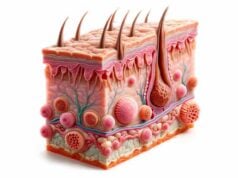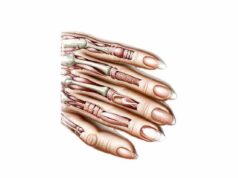
Hair is much more than a decorative feature—it plays a vital role in our overall well-being. From protecting our scalp against environmental hazards and ultraviolet (UV) radiation to contributing to our identity and self-expression, hair is integral to our daily lives. At the biological level, hair is a complex organ composed of a follicle, shaft, and associated glands that work together to regulate growth, color, and texture. This comprehensive guide explores hair anatomy, the hair growth cycle, common disorders, diagnostic techniques, treatment options, and practical nutritional and lifestyle tips to help you maintain healthy, vibrant hair.
Table of Contents
- Structural Composition
- Growth Cycle & Renewal
- Follicular Dynamics & Function
- Physiological & Social Roles
- Prevalent Hair Conditions
- Diagnostic Evaluation Methods
- Therapeutic Interventions
- Nutritional Support & Supplements
- Lifestyle Practices for Hair Wellness
- Trusted Resources & Further Reading
- Frequently Asked Questions
Structural Composition
Hair is a highly specialized, keratinized structure that originates from the hair follicle embedded in the dermis. Each hair strand is a composite of several layers that contribute to its strength, elasticity, and appearance.
Hair Follicle Architecture
The hair follicle is a dynamic mini-organ that extends deep into the skin. It is responsible for generating the hair shaft and comprises several key components:
- Bulb:
The bulb is the base of the hair follicle where active cell division occurs. It houses the dermal papilla, a vascular structure that supplies essential nutrients and oxygen. The bulb is also the site where melanocytes produce melanin, the pigment that gives hair its color. - Matrix:
Surrounding the dermal papilla, the hair matrix consists of rapidly dividing cells that form the hair shaft. These cells eventually keratinize, producing the tough protein fibers that make up the bulk of the hair. - Inner and Outer Root Sheaths:
The inner root sheath shapes the emerging hair shaft, while the outer root sheath provides additional support and continuity from the follicle to the skin surface.
Hair Shaft Structure
The visible part of the hair, the shaft, is composed of three distinct layers:
- Cuticle:
The outermost layer, consisting of overlapping, scale-like cells, protects the inner structures. A smooth, intact cuticle reflects light, giving hair its shine, while damage to the cuticle can result in dull, frizzy hair. - Cortex:
The cortex forms the bulk of the hair and contains keratin fibers and melanin granules. It determines the strength, elasticity, and color of hair. Variations in the arrangement of keratin fibers affect hair texture, whether straight, wavy, curly, or kinky. - Medulla:
Present in thicker hair types, the medulla is a central core whose function remains partly unclear but is thought to contribute to the overall structure of the hair.
Sebaceous Glands and Arrector Pili
Adjacent to each hair follicle, sebaceous glands secrete sebum, an oily substance that lubricates the hair and skin. Sebum protects hair from dryness and external damage and has antimicrobial properties. The arrector pili muscle, a tiny smooth muscle attached to the hair follicle, contracts in response to cold or emotional stimuli, causing “goosebumps” and aiding in thermoregulation.
Growth Cycle & Renewal
Hair undergoes a continuous cycle of growth, regression, and rest that is critical to its renewal and overall health. This cyclical process not only determines hair length and density but also influences the response to various treatments and conditions.
Phases of the Hair Growth Cycle
- Anagen (Growth Phase):
Lasting anywhere from two to seven years, the anagen phase is when hair actively grows. The duration of this phase largely determines the maximum length of hair. During this phase, cells in the hair matrix divide rapidly, forming the hair shaft. - Catagen (Transition Phase):
The catagen phase is a short transitional period lasting about two to three weeks. During this time, the hair follicle shrinks, and hair growth slows dramatically. The dermal papilla begins to detach from the hair matrix. - Telogen (Resting Phase):
Lasting about three to four months, the telogen phase is characterized by a cessation of hair growth. At the end of this phase, the hair eventually falls out, making room for new growth as the follicle re-enters the anagen phase.
Factors Affecting the Hair Growth Cycle
The hair growth cycle is influenced by numerous factors including genetics, hormonal fluctuations, nutritional status, and overall health. Environmental stressors, medications, and underlying health conditions can disrupt this cycle, leading to excessive shedding or hair loss.
Renewal and Regeneration
Hair renewal depends on the regenerative capacity of the hair follicle. Stem cells located in the bulge area of the follicle play a critical role in regenerating the hair shaft. Effective hair care practices and a healthy lifestyle help maintain the integrity of this cycle and promote robust hair growth.
Follicular Dynamics & Function
The hair follicle is a dynamic, multi-layered structure that governs hair growth, texture, and color. It is highly responsive to hormonal and environmental signals, influencing both the quality and quantity of hair produced.
Cellular Activities Within the Follicle
- Keratinization Process:
As hair cells migrate from the hair matrix upward, they undergo keratinization—a process where cells become filled with the protein keratin. This process provides the hair shaft with strength and resilience. - Melanogenesis:
Melanocytes within the hair bulb produce melanin, the pigment responsible for hair color. The type and amount of melanin determine the hue and shade of the hair, and changes in melanogenesis contribute to graying over time. - Follicular Cycling:
The dynamic nature of the hair follicle is evident in its cyclic phases (anagen, catagen, telogen). Cellular activities during these phases are tightly regulated by growth factors, hormones, and genetic factors.
Hormonal Influence
Androgens, estrogens, and other hormones significantly influence hair follicle function. Androgens, such as testosterone and dihydrotestosterone (DHT), can cause hair follicle miniaturization in genetically predisposed individuals, leading to androgenetic alopecia (pattern baldness). Conversely, balanced hormonal levels are crucial for maintaining healthy hair growth.
Environmental and Genetic Factors
The interplay between genetics and environmental influences determines hair characteristics. Genetic predispositions set the baseline for hair growth patterns, while external factors such as diet, stress, and exposure to chemicals or UV light can modify the function and health of hair follicles over time.
Physiological & Social Roles
Hair serves many important roles that extend beyond mere aesthetics. It plays a crucial part in protecting the body, regulating temperature, and even influencing social interactions and personal identity.
Protective Functions
- Scalp Protection:
Hair on the scalp acts as a natural barrier, shielding the skin from ultraviolet (UV) rays and environmental pollutants. It helps reduce sun exposure and prevents damage to the underlying skin. - Sensory Function:
Hair follicles are rich in nerve endings, providing tactile sensitivity that can detect slight movements or external stimuli. Eyelashes and eyebrows protect the eyes by triggering the blink reflex, while nasal hair filters out dust and allergens.
Thermoregulation
Hair plays an important role in thermoregulation. On the scalp, hair insulates against cold temperatures, helping to maintain body heat. Conversely, in warm conditions, hair can help dissipate heat and protect the skin from direct sun exposure.
Social and Psychological Implications
- Cultural Identity and Self-Expression:
Hair is a significant aspect of personal appearance and cultural identity. Hairstyles, hair color, and texture can convey social status, cultural affiliations, and personal style, profoundly impacting self-esteem and confidence. - Communication:
Hair can serve as a non-verbal communication tool, influencing perceptions of attractiveness and personality. Changes in hair style or color are often used as expressions of individuality or personal transformation.
Role in Forensic and Medical Science
- Forensic Evidence:
Hair analysis is a valuable tool in forensic investigations, providing information about genetic identity, drug exposure, and environmental factors. - Diagnostic Marker:
Changes in hair quality and growth patterns can serve as indicators of underlying health issues, such as nutritional deficiencies, hormonal imbalances, or systemic diseases.
Hair’s multifaceted roles—ranging from physical protection and temperature regulation to social expression and diagnostic potential—underscore its importance in human biology and culture.
Prevalent Hair Conditions & Disorders
Hair and scalp disorders are common and can have significant impacts on appearance, self-esteem, and overall health. Understanding these conditions is essential for effective management and treatment.
Androgenetic Alopecia (Pattern Baldness)
- Etiology and Manifestations:
Androgenetic alopecia is characterized by progressive hair thinning and loss due to genetic predisposition and hormonal influences. Men often experience receding hairlines and crown thinning, while women typically present with diffuse thinning on the crown. - Management Strategies:
Treatments include topical minoxidil, oral finasteride (for men), and low-level laser therapy. Lifestyle modifications and nutritional support can also help slow the progression of hair loss.
Alopecia Areata
- Autoimmune Nature:
Alopecia areata is an autoimmune condition where the immune system attacks hair follicles, leading to patchy hair loss. The condition can affect any hair-bearing area. - Therapeutic Options:
Treatment involves corticosteroids, immunotherapy, and topical agents that suppress the immune response, promoting hair regrowth.
Telogen Effluvium
- Stress-Related Shedding:
Telogen effluvium occurs when a large number of hair follicles prematurely enter the telogen (resting) phase, often triggered by stress, illness, hormonal changes, or nutritional deficiencies. - Recovery Process:
Once the underlying cause is addressed, hair typically regrows over time. Management includes stress reduction, dietary improvements, and sometimes supplementation.
Seborrheic Dermatitis and Dandruff
- Scalp Inflammation:
Seborrheic dermatitis is a common inflammatory condition of the scalp that results in redness, flaking, and itching. It is often associated with an overgrowth of Malassezia yeast. - Treatment Options:
Treatments include medicated shampoos containing ketoconazole, selenium sulfide, or coal tar, along with topical corticosteroids to reduce inflammation.
Trichotillomania
- Compulsive Hair Pulling:
Trichotillomania is a psychological condition characterized by the compulsive urge to pull out hair, resulting in patchy hair loss. It is considered a body-focused repetitive behavior. - Management:
Treatment typically involves behavioral therapy, cognitive-behavioral therapy (CBT), and, in some cases, medications to address underlying anxiety or obsessive-compulsive symptoms.
Hair Shaft Disorders
- Structural Abnormalities:
Hair shaft disorders such as trichorrhexis nodosa (weak points along the hair shaft) and pili torti (twisted hair shafts) lead to fragile, brittle hair that is prone to breakage. - Management:
These conditions are usually managed by avoiding physical and chemical trauma to the hair, using gentle hair care practices, and addressing any nutritional deficiencies.
Understanding these common hair conditions is essential for early intervention and effective treatment, ensuring that individuals can maintain healthy hair and a positive self-image.
Evaluation Techniques for Hair & Scalp Disorders
Accurate diagnosis of hair and scalp conditions is vital for effective treatment. A range of diagnostic tools and techniques are used to evaluate hair loss, scalp inflammation, and structural abnormalities.
Clinical Examination
- Medical History and Physical Inspection:
A detailed medical history, including family history, recent illnesses, stress factors, and dietary habits, is essential. The physical examination assesses hair density, scalp condition, and the pattern of hair loss. - Hair Pull Test:
This test involves gently pulling a group of hairs to assess shedding rates. An excessive number of easily removed hairs may indicate active hair loss or telogen effluvium.
Trichoscopy (Scalp Dermoscopy)
Trichoscopy provides magnified images of the scalp and hair follicles using a dermatoscope. It can reveal specific patterns associated with various conditions:
- Yellow Dots: Indicative of alopecia areata.
- Exclamation Mark Hairs: Often seen in alopecia areata.
- Broken or Miniaturized Hairs: Common in androgenetic alopecia and other hair disorders.
Scalp Biopsy
A scalp biopsy may be performed when the diagnosis is unclear or when inflammatory or scarring alopecia is suspected. A small section of the scalp is removed under local anesthesia and examined histologically to determine the type and extent of the pathology.
Laboratory Tests
- Blood Tests:
Blood work can detect underlying nutritional deficiencies (such as iron or vitamin D), thyroid dysfunction, or hormonal imbalances that may contribute to hair loss. - Fungal Culture:
If a fungal infection (tinea capitis) is suspected, a culture of hair or scalp scrapings can help identify the pathogen.
Advanced Imaging
- Electron Microscopy:
In rare cases, electron microscopy can provide detailed images of the hair shaft, revealing structural abnormalities that contribute to fragility and breakage.
These diagnostic techniques offer comprehensive insights into hair and scalp disorders, enabling targeted and effective treatment strategies.
Therapeutic Interventions & Solutions
Treating hair and scalp disorders involves a multifaceted approach tailored to the specific condition. From topical treatments and oral medications to innovative therapies and surgical interventions, a range of strategies is available to promote healthy hair growth and restore scalp vitality.
Topical Treatments
- Minoxidil:
A widely used topical solution that stimulates hair growth by increasing blood flow to hair follicles and extending the anagen phase of the hair cycle. Available as a liquid or foam, it is approved for treating androgenetic alopecia. - Topical Corticosteroids:
These anti-inflammatory agents are used to treat scalp conditions such as alopecia areata, seborrheic dermatitis, and psoriasis. They help reduce inflammation and create a more favorable environment for hair growth. - Antifungal Shampoos:
For conditions like dandruff and seborrheic dermatitis, medicated shampoos containing ketoconazole or selenium sulfide help control fungal overgrowth and reduce scalp inflammation.
Oral Medications
- Finasteride:
An oral medication primarily used in men with androgenetic alopecia. It works by inhibiting the conversion of testosterone to dihydrotestosterone (DHT), a hormone that contributes to hair follicle miniaturization. - Spironolactone:
Commonly prescribed for women with androgenetic alopecia or hormonal imbalances, spironolactone acts as an anti-androgen, reducing hair loss and promoting thicker hair growth. - Antifungals and Antibiotics:
In cases of scalp infections, systemic medications may be necessary to eradicate the underlying infection and alleviate symptoms.
Innovative Therapies
- Platelet-Rich Plasma (PRP) Therapy:
PRP involves injecting a concentrated solution of the patient’s own platelets into the scalp. Growth factors released by the platelets stimulate hair follicles, promoting hair growth and increasing density. - Low-Level Laser Therapy (LLLT):
LLLT uses red light to stimulate cellular activity in the scalp, improving blood circulation and promoting hair regeneration. It is a non-invasive treatment option that has shown promise in treating various forms of hair loss. - Microneedling:
Microneedling creates micro-injuries in the scalp, stimulating collagen production and enhancing the absorption of topical treatments like minoxidil. This procedure can improve hair growth in individuals with androgenetic alopecia.
Surgical Options
- Hair Transplantation:
For individuals with significant hair loss, hair transplantation procedures such as Follicular Unit Extraction (FUE) or Follicular Unit Transplantation (FUT) are options. These methods involve relocating hair follicles from a donor area to thinning or bald regions, resulting in a natural-looking hairline. - Scalp Reduction:
In severe cases of hair loss, scalp reduction surgery removes bald areas and stretches the remaining scalp to cover the area. This procedure is less common due to advancements in hair transplantation techniques.
Supportive Therapies
- Nutritional and Hormonal Therapy:
Addressing underlying nutritional deficiencies and hormonal imbalances is critical for hair health. Supplementation with vitamins, minerals, and omega-3 fatty acids can enhance hair growth and overall scalp condition. - Psychological Counseling:
Hair loss can have significant emotional and psychological impacts. Counseling or cognitive behavioral therapy (CBT) can help individuals cope with the stress and self-esteem issues associated with hair loss.
Together, these therapeutic interventions offer a range of options for managing hair loss and scalp disorders. A personalized approach, often combining several treatments, can yield the best outcomes for maintaining healthy hair.
Nutritional Support for Healthy Hair
Nutrition plays a fundamental role in maintaining healthy hair. A well-balanced diet rich in essential vitamins, minerals, and proteins supports the structural integrity of hair, promotes growth, and helps prevent hair loss. Targeted supplementation can further enhance hair health, especially in cases of nutritional deficiencies.
Key Nutrients for Hair Health
- Biotin:
An essential B-vitamin that promotes keratin production, biotin is crucial for hair strength and growth. Foods rich in biotin include eggs, nuts, and whole grains. - Zinc:
Zinc is vital for hair tissue growth and repair. It regulates hormone levels and supports the proper functioning of sebaceous glands that produce oil to keep hair moisturized. - Vitamin D:
Adequate vitamin D levels are linked to the regulation of the hair growth cycle. Deficiencies in vitamin D can lead to hair thinning and loss. Sunlight exposure and foods like fatty fish and fortified dairy products help maintain healthy levels. - Vitamin E:
This antioxidant protects hair cells from oxidative stress and improves scalp circulation. Nuts, seeds, and green leafy vegetables are excellent sources of vitamin E. - Iron:
Iron is essential for oxygen transport to the hair follicles. Iron deficiency is a well-known cause of hair loss, particularly in women, making it critical to include iron-rich foods such as lean meats, beans, and spinach.
Omega-3 Fatty Acids
Omega-3 fatty acids found in fish oil, flaxseed, and walnuts help reduce inflammation, improve scalp health, and nourish hair follicles. They support a healthy hair growth cycle and improve the overall condition of hair.
Herbal Supplements
- Saw Palmetto:
Often used for its anti-androgen properties, saw palmetto can help reduce hair loss by inhibiting the conversion of testosterone to dihydrotestosterone (DHT). - Ginkgo Biloba:
Known to enhance blood flow, ginkgo biloba may improve nutrient delivery to the hair follicles and support healthy hair growth.
Antioxidant Support
- Coenzyme Q10 (CoQ10):
CoQ10 is critical for cellular energy production and acts as a potent antioxidant that protects hair follicles from oxidative damage. - N-Acetylcysteine (NAC):
NAC boosts the production of glutathione, an essential antioxidant that helps reduce oxidative stress in hair follicles.
A diet that includes these key nutrients, along with appropriate supplementation when necessary, can significantly enhance hair quality and promote robust, healthy growth.
Lifestyle Practices for Enhancing Hair Wellness
Healthy hair is not only the result of good nutrition and effective treatments—it also depends on healthy lifestyle practices. By adopting strategies that minimize damage and support the natural growth cycle, you can maintain vibrant hair and a healthy scalp.
Hair Care Habits
- Gentle Washing:
Use a mild, sulfate-free shampoo and conditioner suited to your hair type. Avoid washing hair too frequently to prevent stripping natural oils. - Regular Conditioning:
Condition regularly to keep hair moisturized and prevent breakage. Deep conditioning treatments can restore moisture and improve hair resilience. - Avoid Excessive Heat:
Limit the use of heat styling tools like hair dryers, flat irons, and curling wands. When heat styling is necessary, use heat protectant sprays to minimize damage. - Trim Regularly:
Regular trims help remove split ends and keep hair looking healthy. Trimming also prevents further breakage and encourages smoother hair growth.
Scalp Health
- Scalp Massage:
Massaging the scalp can stimulate blood circulation, delivering essential nutrients to hair follicles. Use natural oils like coconut or jojoba oil for added moisture. - Avoid Harsh Chemicals:
Limit the use of chemical treatments such as perms, relaxers, and dyes that can weaken hair structure and irritate the scalp.
Environmental Protection
- Sun Protection:
Wear hats or use UV-protective hair products to shield your hair and scalp from harmful ultraviolet rays, which can cause dryness and damage. - Reduce Pollution Exposure:
Protect your hair from environmental pollutants by rinsing your hair after exposure to dust and smog. Regular cleansing helps remove contaminants that can accumulate on the scalp.
Stress Management
- Practice Relaxation Techniques:
Chronic stress can negatively affect hair growth. Incorporate stress-reducing practices such as meditation, yoga, or deep breathing exercises to maintain hormonal balance and promote healthy hair growth. - Get Adequate Sleep:
Quality sleep is essential for the body’s repair processes, including hair regeneration. Aim for 7–9 hours of sleep each night.
Physical Activity
- Regular Exercise:
Engaging in regular physical activity improves overall circulation, ensuring that hair follicles receive sufficient nutrients and oxygen. Exercise also helps regulate stress levels, which can positively influence hair health.
By integrating these lifestyle practices, you can create a supportive environment for hair growth, reduce the risk of damage, and enhance the overall vitality and appearance of your hair.
Trusted Resources & Further Reading
Staying informed about hair health and maintenance is essential for both individuals experiencing hair issues and professionals in the field. The following resources provide up-to-date research, practical advice, and comprehensive information on maintaining and restoring healthy hair.
Recommended Books
- “The Hair Loss Cure” by David H. Kingsley:
This book offers insights into the causes of hair loss and presents a range of treatment options, combining scientific research with practical advice. - “Healthy Hair: A Step-by-Step Guide to Healthy Hair” by Myra Mahoney:
A comprehensive guide that covers natural methods for maintaining hair health, including dietary strategies and hair care routines. - “The Science of Black Hair: A Comprehensive Guide to Textured Hair Care” by Audrey Davis-Sivasothy:
Focuses on the unique aspects of textured hair care, providing scientific explanations and practical tips for maintaining healthy, vibrant hair.
Academic Journals
- Journal of the American Academy of Dermatology:
This peer-reviewed journal publishes research on a range of dermatological conditions, including hair disorders, treatments, and scalp health. - International Journal of Trichology:
Dedicated exclusively to hair research, this journal covers both clinical and experimental studies on hair growth, loss, and scalp conditions.
Digital Tools and Mobile Apps
- Hair Journal:
An app designed to track hair care routines, product usage, and progress over time, helping users maintain a consistent and effective hair care regimen. - Think Dirty:
A product ingredient checker that helps users avoid harmful chemicals in hair care products, promoting healthier hair and scalp. - YouCam Makeup:
Offers virtual hair color and style simulations, allowing users to experiment with different looks and find inspiration for hair care and styling.
These trusted resources offer valuable insights and practical tools for anyone looking to improve and maintain their hair health, whether through scientific research, professional advice, or personalized hair care strategies.
Frequently Asked Questions About Hair
What are the primary functions of hair?
Hair serves multiple roles, including protecting the scalp from environmental damage, regulating body temperature, providing sensory input, and contributing to personal aesthetics and self-expression.
How does the hair growth cycle work?
Hair growth occurs in three phases: the anagen (growth) phase, the catagen (transitional) phase, and the telogen (resting) phase. This cycle determines hair length, density, and the timing of hair shedding.
What causes common hair loss conditions?
Common causes of hair loss include genetic predisposition, hormonal imbalances, nutritional deficiencies, stress, and environmental factors. Conditions such as androgenetic alopecia and telogen effluvium are among the most prevalent.
How are hair disorders diagnosed?
Diagnosis typically involves a clinical examination, a detailed patient history, and specialized tests like trichoscopy, scalp biopsy, and laboratory tests to assess underlying nutritional or hormonal imbalances.
What lifestyle changes can improve hair health?
Maintaining a balanced diet, staying hydrated, minimizing heat and chemical damage, managing stress, protecting hair from UV rays, and having regular scalp care are all effective strategies for enhancing hair health.
Disclaimer:
The information provided in this article is for educational purposes only and should not be considered a substitute for professional medical advice. Always consult a healthcare provider for personalized guidance.
If you found this guide helpful, please share it on Facebook, X (formerly Twitter), or your preferred social media platform to help spread awareness about hair health and wellness.








